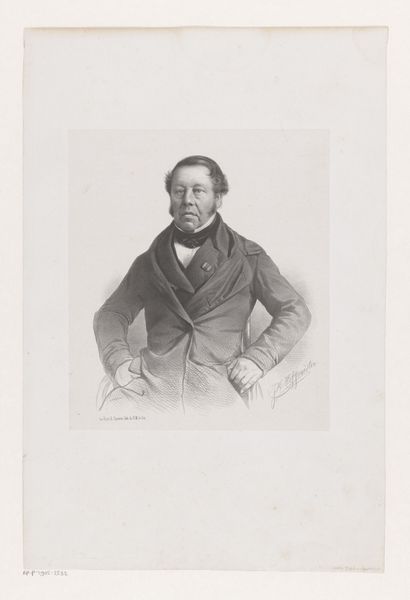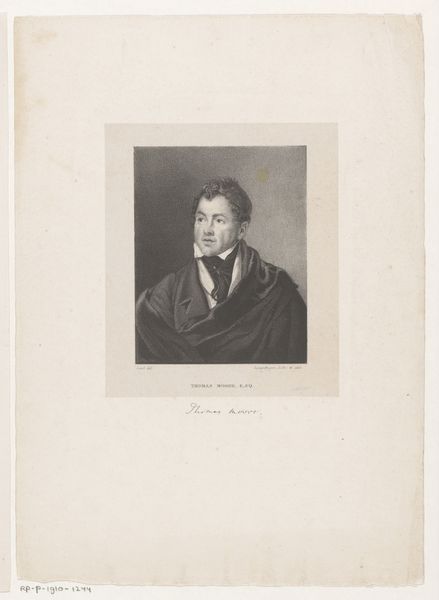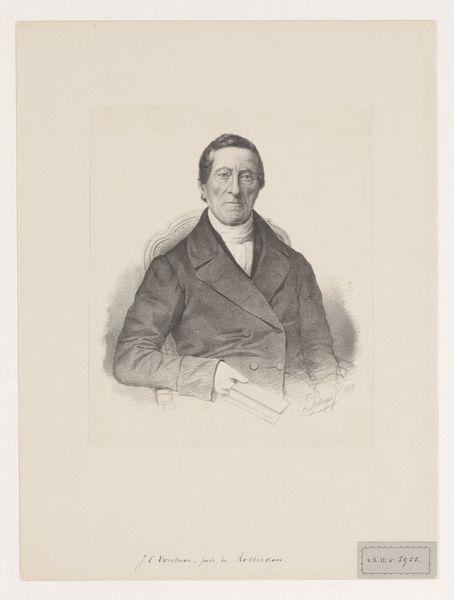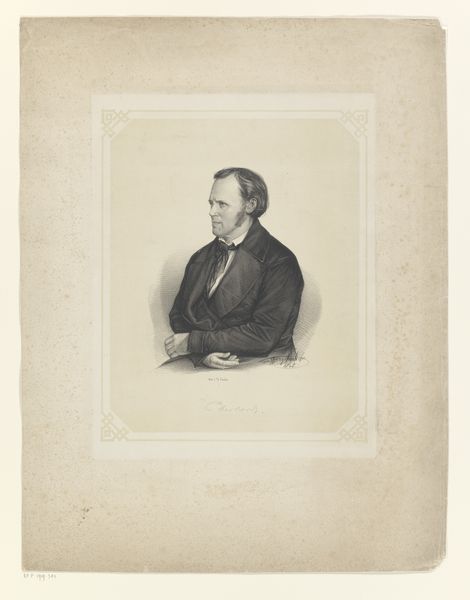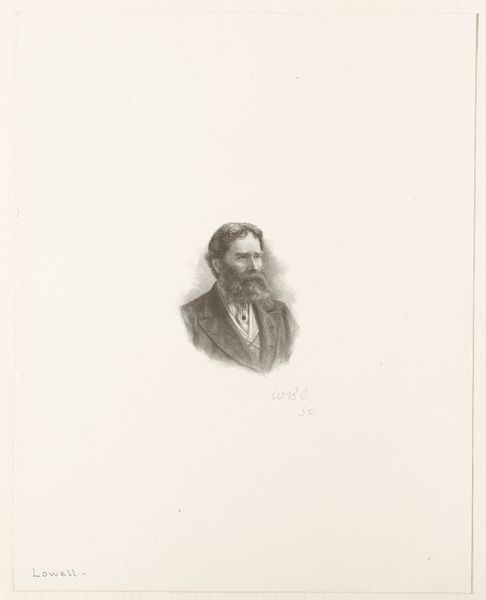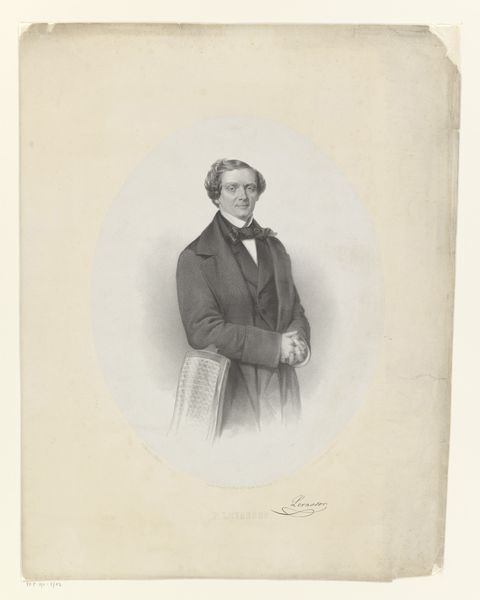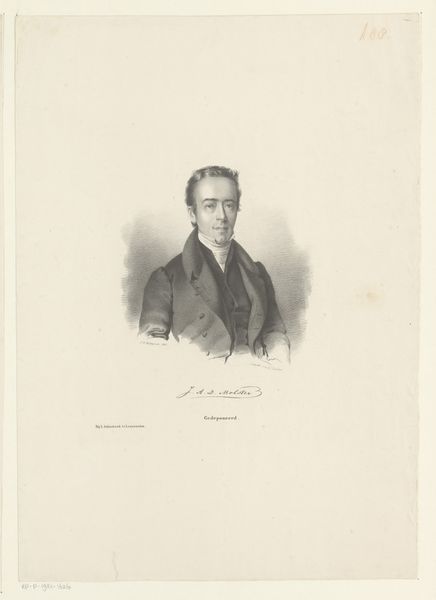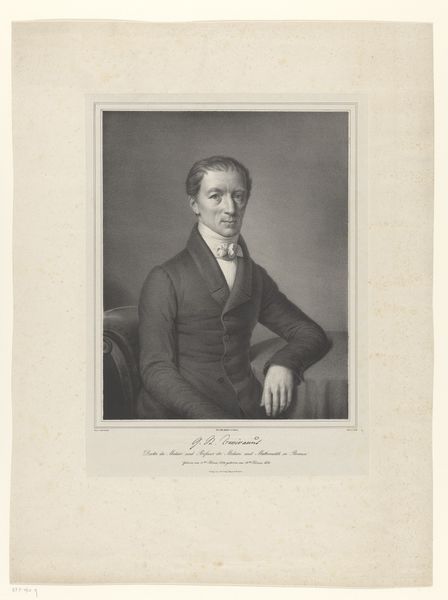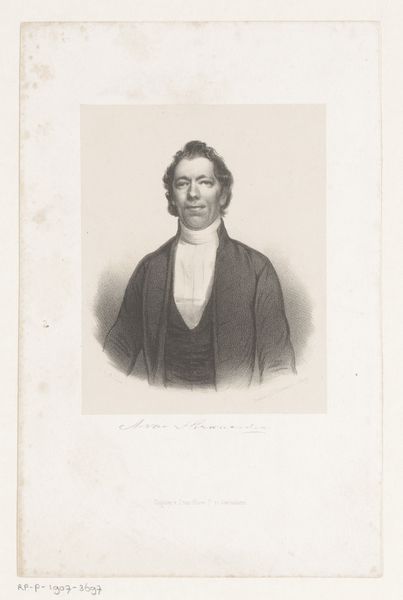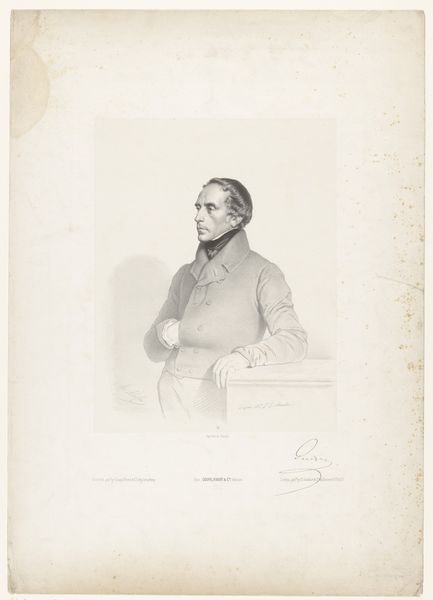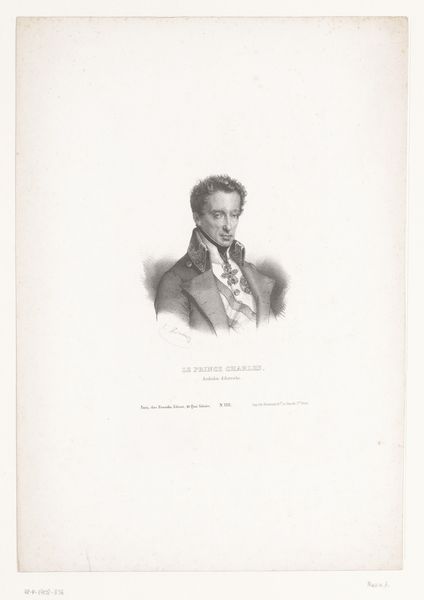
lithograph
#
portrait
#
lithograph
#
historical photography
#
realism
Dimensions: height 545 mm, width 424 mm
Copyright: Rijks Museum: Open Domain
Editor: Here we have Adolphe Mouilleron's "Portret van Gr\u00e9goire Bordillon," dating between 1830 and 1881. It's a lithograph currently held at the Rijksmuseum. I find his sideways glance very intriguing, almost suspicious. What stands out to you in this portrait? Curator: Well, lithography allowed for wider distribution of portraits. Who was Bordillon, and who would have wanted this image? The placement in the Rijksmuseum suggests historical or artistic significance, perhaps documenting a figure from a specific social sphere. Notice the hat he's holding - what does this tell us? Editor: It’s quite formal attire, suggesting wealth or at least a desire to appear respectable. Perhaps he was a public figure, or someone aspiring to be? Curator: Precisely. The realism in the rendering of his face speaks to a burgeoning middle class, keen to see their likeness and status represented and circulated. Lithography enabled this at a lower cost. Do you think this contributed to shifting power dynamics in society at that time? Editor: Definitely! Accessible portraiture empowers broader social participation and discourse. This artwork demonstrates that technological advancements in art impact social structures and identity formation. Curator: Exactly! It shows the interesting interplay of art, technology, and social aspiration. Editor: I hadn't considered lithography as such a democratizing force. Curator: And how public image could be shaped through affordable art forms. Editor: Thanks, this was a really insightful analysis!
Comments
No comments
Be the first to comment and join the conversation on the ultimate creative platform.
